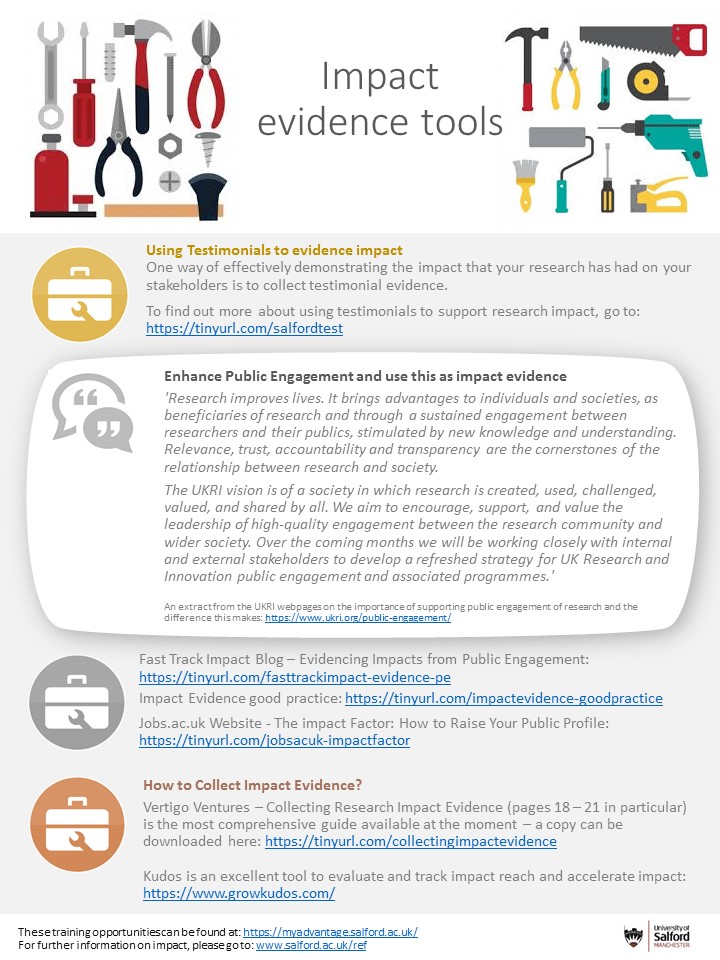Once you have started to identify the impact that your research activities are having, it is important to capture evidence or ‘proof’ of this impact so that you can demonstrate this to your stakeholders and funders to show why your research is so important in the wider context.
In order to capture impact, it needs to be tracked, evaluated and evidenced on an ongoing basis.
It is important to understand:
- What is the focus of the assessment: what type of impact are you trying to measure?
There may be more than one type of impact – your research may have both a societal and an economic benefit, for example. Be clear about what you wish to capture.
- At what stage of the research should this be assessed?
It is important to remember that while some impact could be generated while the research is ongoing (particularly in the case of action research, for example), in many cases impact takes a number of years to develop and will need to be tracked beyond the lifecycle of your project
- What are the impact goals and indicators?
How will you know whether you have achieved real-world impact? Identify what types of evidence could show that you have met your impact goals.
- Which stakeholders are involved in your assessment and who are you reporting to?
Remember that it is important to track forwards and backwards throughout the research process to ensure stakeholder engagement at every stage.
- Finally, what are the lessons learned?
It is important to put into place an evaluation process to see what worked well, what worked less well, how successful you were in capturing evidence, whether you should have started this process earlier in the research cycle, whether you used the most effective tools to capture your evidence and so on.
Impact Evidence
Impact can be captured and evidenced in a number of different ways, including:
- Obtaining testimonials from key stakeholders: this could be a company that has benefitted from increased sales based on findings from your research, or from a healthcare trust that has seen patients benefit as a result of your research intervention, for example
- Obtaining quotes from stakeholders: this could be audience members who have attended an event and have left some feedback on a survey, for example
- Independent citations in the media: for example, newspaper articles that directly reference the impact of your research
- Documented changes to codes/guidelines: for example, changes to policy documents that directly cite your research as a reason for the change
- Audience feedback/surveys: before and after surveys at public engagement events, festivals and so on can capture changes in public perception and attitudes and can be followed up over time
- Business performance measures: sales figures, new or improved products, processes or services can provide evidence of benefits to a business as a result of your research intervention
- Evidence of closing skills gaps: capacity building within organisations, for example
To set up an Impact Action Plan to help you better understand how to generate and capture your impact, please contact Emma Sutton, REF, KEF & Impact Manager, by e-mailing research-impact@salford.ac.uk.
